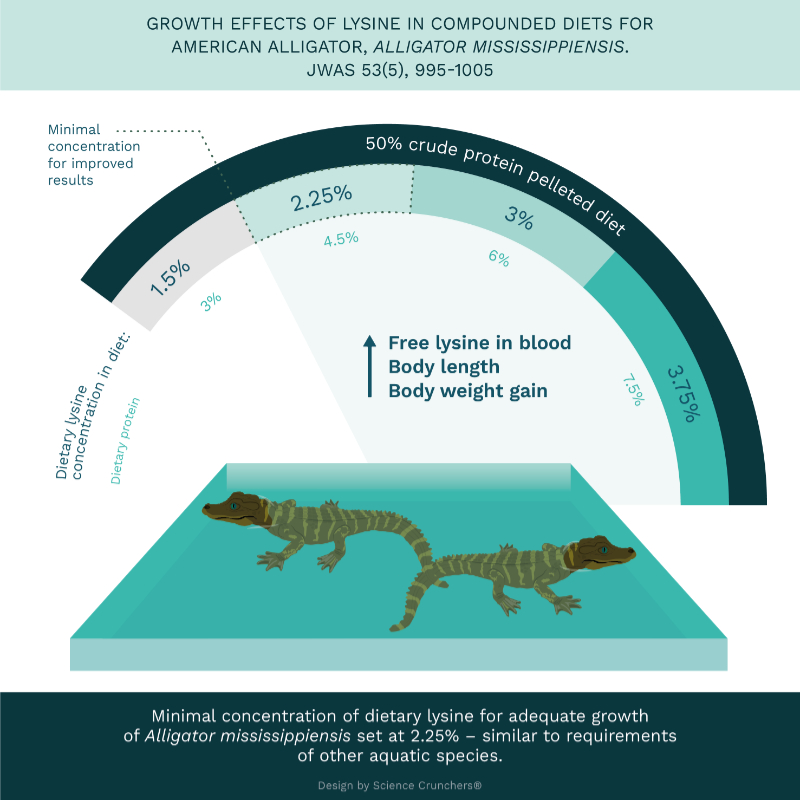JWAS Editor's Choice Awards 56(1)
The use of integrated multi-trophic aquaculture (IMTA) for multi-species culture is not new, but thi...

Alligator farming in the state of Louisiana is the second-largest aquaculture industry and a highly valuable animal-production enterprises for the state. Extruded feeds are currently available to the alligator industry but there is limited information on the nutritional requirements of captive-reared alligators. This study looks at the essential amino acid lysine and was designed to provide baseline data on lysine requirements of alligators. Therefore, hatchling alligators were fed pelleted diets containing graded levels of dietary lysine for 10 months. Using alligator body length, body weight, and free lysine in blood plasma the authors establish a first estimate of lysine concentration for alligator diets composed of practical feedstuffs. They found that a concentration of at least 2.25% dietary lysine, or about 4.5% of the protein in a 50% crude protein diet, provided adequate growth of the American alligator under the study conditions tested.
This preliminary investigation assessed the impact of COVID-19 on aquaculture in China. Questionnaire surveys were sent out to aquaculture stakeholders along the industrial chain in two provinces during the period of strict control and after control measures were lifted. The authors found that due to delayed harvest, fish stocks were held-up in ponds and normal farming was interrupted. Farmers and traders were impacted more severely by the pandemic than other sectors and the authors recommend strategies and measures to cope with the pandemic and other similar risks in the future. Results should guide the aquaculture industry in minimizing the impact of the pandemic and assist with recovery in the post-pandemic period.
This study utilized sea cucumbers and cockles in the first trial application of an integrated multi-trophic aquaculture (IMTA) system for pond culture of shrimp in Kenya. IMTA was compared with monoculture of shrimp in these intertidal earthen ponds. Following a comparison of harvest weight gain, an economic analysis revealed an increase in net income under IMTA and a cost benefit ratio of 1.77 higher than the monoculture system. Such findings support the integration of these species and pond IMTA technology for coastal mariculture production in Kenya.
The authors apply the Cobb–Douglas stochastic production frontier function to evaluate intensive and extensive systems for shrimp production in Vietnam. From a survey of 436 white-leg shrimp (Litopenaeus vannamei) farms in the Mekong Area, it was shown that farmers with self-reported experiences of drought have higher production efficiency, and those experiencing irregular weather had reduced efficiency. Education and feeding